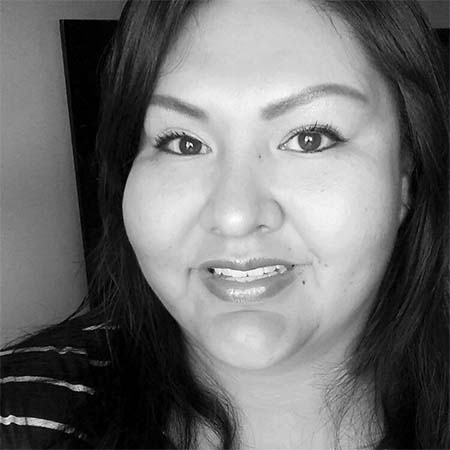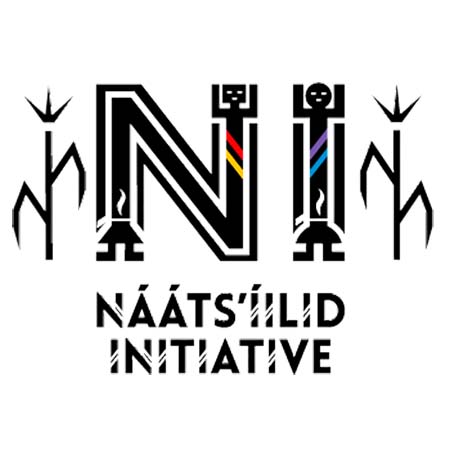DENNEHOTSO, Ariz. — Carmi Holguin wants to address the acute need for affordable housing on Navajo Nation with an Indigenous twist on the Habitat for Humanity “sweat equity” model.

Along with Jose Galarza, Holguin co-founded the nonprofit Nááts’íilid Initiative to empower Navajo families to build their own new homes. The goal is to provide the families with supplies and assistance so they can have a chance at homeownership solely through sweat equity, workmanship and craft, and then pay forward that knowledge by helping others.
“They wouldn’t have to be a part of a mortgage or a loan or anything — just their work,” Holguin (Diné) told Tribal Business News. “These families are willing to help do whatever they can to have a safer home.”
As a community organizer and veteran of the construction and management industry, Holguin has years of experience working to build homes for others via multiple organizations that have aimed to address needs for Navajo families and elders. However, many of those efforts were fraught with red tape or political or funding issues that kept them from ultimately achieving their goals.
Those experiences convinced Holguin to launch her own “Indigenous-led, coalition driven” collaborative, working with Tuba City-based Native American business incubator Change Labs over the last year to refine the business model for Nááts’íilid Initiative. (Nááts’íilid translates to rainbow in Navajo language.) Now, Holguin said she feels prepared to use the model to help people in need of safe and clean shelter.
After “falling through the cracks” of various assistance programs for years, some Navajo families — many of them multigenerational — live in dilapidated and unsafe housing or are without a permanent home at all, Holguin said. To that end, a survey she performed in a 271-square-mile area near her hometown of Dennehotso, Ariz. yielded 500 requests for assistance from Nááts’íilid Initiative.
 “There’s a huge need for homes here on the reservation,” Holguin said. “(Many families) are living in unsafe situations. Some of the homes have black mold. Their house is deteriorating. Those are the families we want to help and we want to make sure that they are safe.”
“There’s a huge need for homes here on the reservation,” Holguin said. “(Many families) are living in unsafe situations. Some of the homes have black mold. Their house is deteriorating. Those are the families we want to help and we want to make sure that they are safe.”
While the organization is still in the startup phase and has yet to complete a home construction project, Nááts’íilid Initiative’s current plan would require participating families to already own or lease land on which their new home will be built, and perform 60 percent of the work toward building it. The other 40 percent — including some design work — is completed by volunteers. The program would rely on as many natural resources and products as possible, such as plants and natural plastering materials, in the construction of each house.
The sweat equity projects will also include training on everything from homeownership and maintenance to CPR, she said. While each build will have professional supervision, the family appoints a “lead builder” to guide the building effort.
As well, many Navajo have prior experience from jobs in the construction sector, which makes them a natural fit for sweat equity work, Holguin said.
“This is the part that separates Navajo from so many places: Many of our people are good at carpentry and building skills,” Holguin said. “With the current pandemic, a lot of these people have been laid off. I think this puts us in a good position. A lot of these families have someone taking on that role as a lead builder. If not, they or we could find someone.”
The Nááts’íilid Initiative’s board currently is seeking grants and alternative funding sources to support the construction of houses for an initial proof of concept involving six families, according to Holguin.
Initial cost estimates for Nááts’íilid Initiative homes placed each build at roughly $15,000. Including plumbing and electricity, the cost shoots up to $50,000 each. Holguin said the organization plans to fund those costs through federal and state grants, fundraising, and if necessary selling small homes outside of the initiative’s sweat equity builds.
“Right now, we’re just looking for those grants and that financial assistance. We want to identify and work with community chapters to identify people in need of a home,” Holguin said. “We’re looking into doing tiny homes as a side business.”
Studies on Navajo homelessness back up the need for the Nááts’íilid Initiative’s work. In 2020, the Environmental Protection Agency noted that 15 percent of Navajo tribal members lack access to running water in their homes.
Many Navajo live in abandoned vehicles, caves, or in houses with no roof or insulation, Holguin said. She recalled one particular elderly couple whom she encountered prior to starting Nááts’íilid Initiative.
“On the other side of the drywall was just a bunch of plastic bags,” Holguin said. “Water would strain through the roof.”
Examples like that also reinforce the cultural obligation behind building safe and sanitary homes for fellow Diné people, Holguin said.
“Everything in Navajo, even the home, has a life to it. It has a culture, it has feeling. It breathes,” she said. “There’s a story that goes with a home, and we see a home as being another person.”
To that end, the Nááts’íilid Initiative hopes to honor the cultural importance of a home and meet people’s health and financial needs all at once.
“We want to continue to do that with our sweat equity project, keeping traditional culture and modern engineering combined together,” Holguin said.
